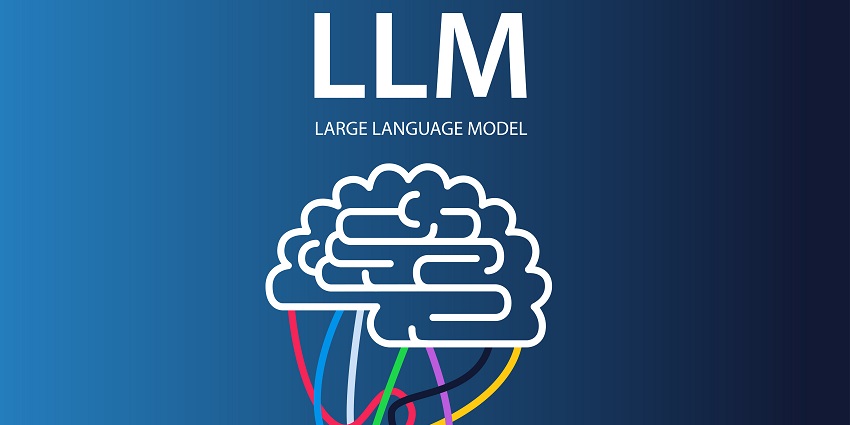The Foundation of the New Siri: A Shift to Generative AI
For years, Siri has been a reliable, if sometimes limited, digital assistant. It excels at setting timers, checking the weather, and controlling smart home devices. However, with the meteoric rise of large language models (LLMs) and conversational AI, the landscape of digital assistance is undergoing a seismic shift. The latest Siri news indicates Apple is not just playing catch-up; it’s preparing to leapfrog the competition with a fundamental overhaul of its iconic assistant, moving from a command-and-control framework to a truly generative and conversational intelligence.
This transformation is part of a broader strategy evident in recent iOS updates news, which have increasingly focused on machine learning and on-device intelligence. The new Siri is expected to be built on a foundation of advanced LLMs, allowing it to understand complex, multi-part queries, maintain conversational context, and generate nuanced, helpful responses rather than relying on pre-programmed scripts. This evolution promises to make interactions with every Apple device, from an iPhone to a HomePod, feel more natural and intuitive.
From Command-and-Control to Conversational Intelligence
The current iteration of Siri operates primarily on a system of defined intents and APIs. When you ask it to play a song, it recognizes the “play music” intent and interfaces with the Apple Music API. This is efficient but rigid. The new generative Siri aims to break free from these constraints. Instead of just recognizing commands, it will comprehend meaning and intent. For example, you could say, “I’m feeling stressed, play something calming,” and the new Siri could interpret your emotional state, cross-reference your listening history, and select an appropriate ambient playlist—a level of reasoning far beyond its current capabilities.
A key part of this strategy involves a hybrid processing model. While competitors often rely heavily on the cloud, Apple is leveraging the formidable power of its custom silicon. The most recent iPhone news and iPad news consistently highlight the performance of the Neural Engine in A-series and M-series chips. This allows for powerful on-device processing, ensuring that personal and sensitive queries are handled locally for maximum speed and privacy. This focus on local computation is a cornerstone of recent Apple privacy news, setting a clear distinction from cloud-first alternatives.
Proactive Intelligence: Siri’s New Role in the Apple Ecosystem
Perhaps the most exciting development is Siri’s transition from a reactive assistant to a proactive one. The goal is for Siri to anticipate user needs and offer assistance without being explicitly asked. Imagine your iPhone summarizing a flurry of overnight notifications into a concise, prioritized briefing. Or Siri noticing you have a meeting across town and proactively checking traffic conditions, all presented as a quiet suggestion on your lock screen.
This proactive intelligence will be woven into the fabric of the entire Apple ecosystem news. Your Apple Watch news might soon include Siri suggesting a workout based on your calendar availability and recent activity levels. Your HomePod mini news could evolve from a smart speaker to a true home coordinator, capable of managing complex routines based on the habits of everyone in the household. This deeper integration represents a significant step toward a truly seamless and intelligent user experience.
Under the Hood: The Technology Powering a Personal AI
The ambition to create a deeply personal and context-aware AI assistant hinges on a sophisticated technical architecture that balances immense power with uncompromising privacy. Apple’s approach is a masterclass in vertical integration, combining its custom hardware, software, and services to create a secure and efficient system for on-device intelligence. This technical foundation is what will allow Siri to search through your personal data without exposing it to the cloud.

The Role of the Neural Engine and On-Device Processing
At the heart of this strategy is the Apple Neural Engine (ANE), a specialized component of Apple’s SoCs designed to accelerate machine learning tasks. Every major piece of Apple accessories news, from the latest iPhones to the Apple Vision Pro, revolves around the capabilities unlocked by this powerful hardware. By running its generative AI models directly on the device, Apple achieves two critical goals: latency and privacy.
First, on-device processing is incredibly fast. There is no round-trip to a distant server, meaning Siri’s responses can be near-instantaneous, which is crucial for a natural conversational flow. Second, and more importantly, it aligns with Apple’s long-standing commitment to user privacy. The fact that your personal data—your messages, emails, photos, and health information—doesn’t have to leave your device to be processed is a monumental piece of iOS security news. This approach stands in stark contrast to many competing services that process user queries in the cloud, creating potential vulnerabilities.
Semantic Indexing: The Key to Searching Personal Context
The magic behind Siri’s ability to understand your personal world is a technology known as semantic indexing. Instead of performing a simple keyword search, the operating system will build a rich, intelligent, and private index of your on-device data. This index doesn’t just store words; it understands relationships, context, and meaning.
Here’s a practical example: You use your Apple Pencil news on your iPad to jot down a note about a “Project Phoenix” meeting. Later, you ask your HomePod news, “Siri, what were the action items from that meeting about the new project?” The old Siri would be stumped. The new Siri, however, can query the on-device semantic index. It understands that “that meeting about the new project” contextually refers to “Project Phoenix” from your handwritten note, finds the relevant information, and provides a summary. This all happens without the content of your note ever being sent to an Apple server. It can even pull related files from iCloud Drive or emails from Mail, creating a comprehensive answer based on your personal data graph.
Redefining the User Experience Across Apple Devices
The implications of a smarter, context-aware Siri extend far beyond simple voice commands. This evolution promises to fundamentally redefine the user experience, making every device within the Apple ecosystem more cohesive, intuitive, and personally tailored to the user. From the way we interact with our most personal devices to the future of spatial computing, the new Siri is poised to become the intelligent thread that ties everything together.
A Day in the Life with the New Siri
To understand the real-world impact, consider a hypothetical day with this next-generation assistant.
- Morning: You wake up and glance at your iPhone. Instead of a long list of notifications, Siri presents a smart summary: “You have an early meeting at 9 AM, traffic is light. Your friend replied to your dinner plans, and there’s a developing story in the Apple TV marketing news you’ve been following.”
- Workday: While working on your iPad, you use your Apple Pencil to sketch a new interface design. You ask, “Siri, pull up the feedback from the last design review.” Siri accesses your emails and Slack messages, summarizes the key points, and displays them alongside your sketch. This deep integration is a far cry from the days when the most exciting iPod Touch news was a new color option; today, it’s about deep software intelligence.
- Commute: In your car with CarPlay, you say, “Siri, text my partner I’m on my way and ask if we need anything from the store.” Siri not only sends the text but also cross-references a shared Reminders list and replies, “You’re out of milk. Should I add it to the grocery pickup order?”
- Evening: While watching a show on your Apple TV news, you ask your AirPods, “Who is that actor?” Siri not only tells you their name but also adds, “They were also in that movie you rated highly last month.”
The Impact on Specialized Devices: From Apple Watch to Vision Pro
This intelligence becomes even more critical on specialized devices. The latest Apple Watch news focuses heavily on health and wellness. A smarter Siri could analyze trends from your Health app data, providing insights like, “Your resting heart rate has been slightly elevated this week. You might want to focus on getting more sleep.” This turns health tracking from passive data collection into actionable Apple health news.

For the nascent world of spatial computing, a powerful AI assistant is not just a feature—it’s a necessity. The most compelling Apple Vision Pro news revolves around creating a seamless, hands-free interface. A conversational Siri that understands spatial context (“Place that browser window on the wall to my left”) and can access your full digital life will be the primary method of interaction. It will be the key to unlocking the true potential of Apple AR news, allowing users to manipulate digital objects and access information with the power of their voice. Future Vision Pro accessories news, such as a conceptual Vision Pro wand news, would be made infinitely more powerful when paired with an AI that understands user intent.
Navigating the Future: Privacy, Pitfalls, and Preparation
As Apple embarks on this ambitious overhaul of Siri, it navigates a complex landscape filled with immense opportunity and significant challenges. The promise of a hyper-personalized AI assistant is tantalizing, but it brings to the forefront critical questions about privacy, accuracy, and user control. Understanding these dynamics is key for users looking to make the most of this new technology while safeguarding their digital lives.
Apple’s Privacy-First Approach: A Competitive Advantage?
Apple’s most significant challenge—and its greatest potential advantage—is what is often called the “privacy paradox.” Users want AI that knows them intimately, but they are increasingly wary of how their data is used. Apple’s answer is its steadfast commitment to on-device processing. By performing the heavy lifting of AI computation directly on the iPhone, iPad, or Mac, Apple can deliver personalization without data harvesting. This is the central pillar of all Apple privacy news and a powerful differentiator in the market.
This strategy allows Siri to access your most sensitive information—your health data, your private messages, your location history—to provide helpful insights, all without that data ever leaving your control. For consumers, this offers peace of mind and builds a level of trust that cloud-based competitors may struggle to match. This focus on iOS security news is not just a feature; it’s the foundation of the entire personal AI strategy.

Potential Pitfalls and User Considerations
Despite the robust architecture, there are potential pitfalls to consider.
- Accuracy and Hallucinations: Generative AI models are known to occasionally “hallucinate” or generate incorrect information. What are the implications if Siri incorrectly summarizes a critical work email or misinterprets a health data point? Apple will need to implement rigorous safeguards and clearly communicate the system’s limitations.
- Complexity of Control: Giving an AI access to all your personal data requires granular and user-friendly controls. Users will need to easily understand and manage what data Siri can access. A confusing or opaque settings panel could erode trust and lead to users disabling the very features that make the new Siri powerful.
- Performance and Battery Life: On-device processing is computationally expensive. While Apple’s silicon is incredibly efficient, running sophisticated AI models could have a noticeable impact on battery life and device performance. Balancing power with efficiency will be a critical engineering challenge. This concern echoes through all device categories, from an iPhone to a theoretical product that might emerge from iPod revival news.
Tips for Users Preparing for the New Siri
As these features roll out in future iOS updates news, users can take steps to prepare.
- Embrace Digital Organization: The new Siri will be most effective when it has well-organized data to work with. Consistently using native apps like Calendar, Reminders, and Notes will create a richer data set for the AI to draw from.
- Review Privacy Settings: Get familiar with your current privacy and security settings. When new updates arrive, take the time to explore the permissions you grant to Siri and other system services.
- Provide Feedback: Early versions of such complex systems will inevitably have quirks. Using Apple’s feedback mechanisms will be crucial in helping refine the technology and improve its accuracy and utility over time.
Conclusion: A New Era of Personal Intelligence
The impending transformation of Siri represents one of the most significant shifts in Apple’s software strategy in years. By moving beyond simple commands to embrace generative AI and deep personal context, Apple is setting the stage for a new era of proactive, intelligent computing. This isn’t merely an update; it’s a re-imagining of the relationship between users and their devices, turning them into true digital partners that can anticipate needs and streamline daily life.
The core of this revolution lies in Apple’s unique ability to merge cutting-edge AI with an unwavering commitment to user privacy through on-device processing. This approach will not only redefine the experience on the iPhone and iPad but will also be the critical enabling technology for future platforms like the Apple Vision Pro. As these capabilities roll out, the entire Apple ecosystem will become more cohesive and intelligent, finally delivering on the long-held promise of a truly personal digital assistant.











